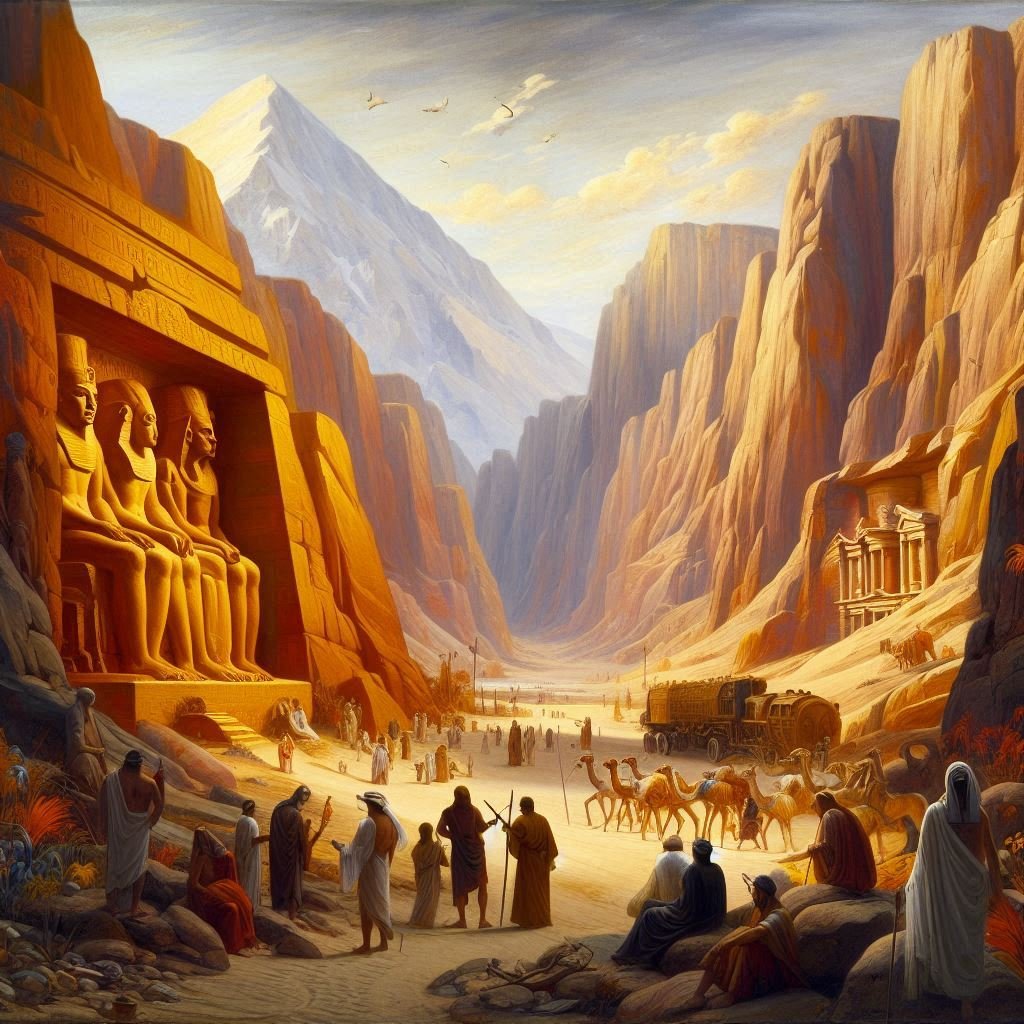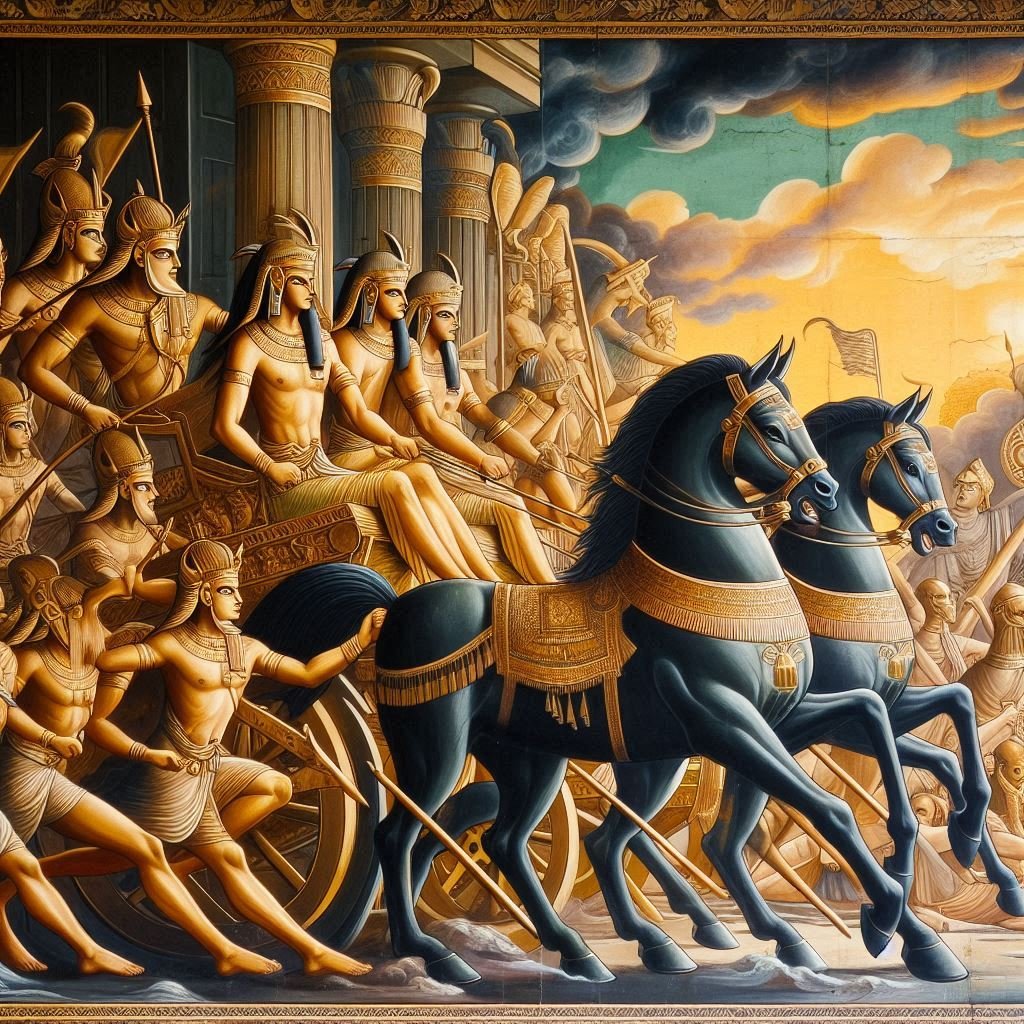Tutankhamun: The Boy King
Tutankhamun, often referred to as the “Boy King,” ascended to the throne at a very young age during the Eighteenth Dynasty, around 1332 BCE. Despite his brief reign, which lasted only about nine years, Tutankhamun’s legacy has captured the world’s imagination, largely due to the discovery of his nearly intact tomb in 1922 by British archaeologist Howard Carter.
Early Life and Ascension
Born Tutankhaten, meaning “Living Image of Aten,” he was likely the son of Akhenaten, the pharaoh who attempted to shift Egypt to monotheistic worship of the sun disk, Aten. After Akhenaten’s death, Egypt returned to its traditional polytheistic beliefs, and Tutankhaten changed his name to Tutankhamun, meaning “Living Image of Amun,” to honor the chief deity of Thebes.
Reign and Achievements
During his reign, Tutankhamun worked to restore the old religious order. He reinstated the worship of Amun and other traditional gods, moved the capital back to Thebes, and undertook various restoration projects. Despite his efforts, his reign was overshadowed by the influence of powerful advisors like Ay and Horemheb, who guided the young pharaoh’s decisions.
The Tomb and its Treasures
Tutankhamun’s fame skyrocketed with the discovery of his tomb in the Valley of the Kings. The tomb’s treasures, including the iconic gold mask, exquisite jewelry, and intricately crafted burial items, have provided unparalleled insights into ancient Egyptian art and culture. This discovery has solidified Tutankhamun’s place among the Famous Pharaohs (Tutankhamun, Ramses II), making his name synonymous with ancient Egyptian splendor.

The Tomb and its Treasures
Tutankhamun’s fame skyrocketed with the discovery of his tomb in the Valley of the Kings. The tomb’s treasures, including the iconic gold mask, exquisite jewelry, and intricately crafted burial items, have provided unparalleled insights into ancient Egyptian art and culture. This discovery has solidified Tutankhamun’s place among the Famous Pharaohs (Tutankhamun, Ramses II), making his name synonymous with ancient Egyptian splendor.
Ramses II: The Great Builder
Ramses II, also known as Ramses the Great, is another towering figure among the Famous Pharaohs (Tutankhamun, Ramses II). Reigning for 66 years from 1279 to 1213 BCE during the Nineteenth Dynasty, Ramses II is often regarded as the epitome of Egyptian power and grandeur. His military conquests, monumental building projects, and long reign left an indelible mark on Egypt and the ancient world.
Military Prowess
Ramses II was a formidable military leader, renowned for his campaigns against the Hittites and other neighboring powers. The Battle of Kadesh, fought around 1274 BCE, is one of his most famous military engagements. Although the battle ended in a stalemate, Ramses II’s portrayal of it as a great victory in inscriptions and monuments exemplifies the propaganda prowess of the Famous Pharaohs (Tutankhamun, Ramses II).
Monumental Construction
One of Ramses II’s most enduring legacies is his ambitious building program. He commissioned numerous temples, statues, and monuments across Egypt, the most notable being the Abu Simbel temple complex. These colossal statues of Ramses II carved into the rock face stand as a testament to his architectural genius and the enduring legacy of the Famous Pharaohs (Tutankhamun, Ramses II).

Diplomatic Achievements
Legacy and Influence
The legacies of Tutankhamun and Ramses II continue to captivate scholars and the public alike. Tutankhamun’s tomb, with its dazzling treasures, provides a snapshot of the wealth and artistry of ancient Egypt. His story has inspired countless exhibitions, documentaries, and books, making him a household name even in 2024.
Ramses II’s legacy as a great builder and military leader is evident in the monuments that still stand today. His reign is often seen as the zenith of ancient Egyptian civilization, a time of great prosperity and cultural achievement. The temples and statues he commissioned remain some of Egypt’s most visited and admired sites, attracting tourists and historians from around the world.
Conclusion
The Famous Pharaohs (Tutankhamun, Ramses II) represent the zenith of ancient Egyptian civilization. Their reigns, though separated by centuries, share a common thread of ambition, resilience, and a commitment to cultural and religious traditions. In 2024, their stories continue to resonate, offering valuable lessons and a deep appreciation for the rich history of Egypt.
Tutankhamun and Ramses II, through their distinct yet equally impactful reigns, have secured their places among the Famous Pharaohs (Tutankhamun, Ramses II). Their legacies, characterized by stunning achievements in art, architecture, religion, and governance, continue to inspire and fascinate people around the world. As we explore their lives and contributions, we gain a deeper understanding of the complexities and grandeur that defined ancient Egypt.